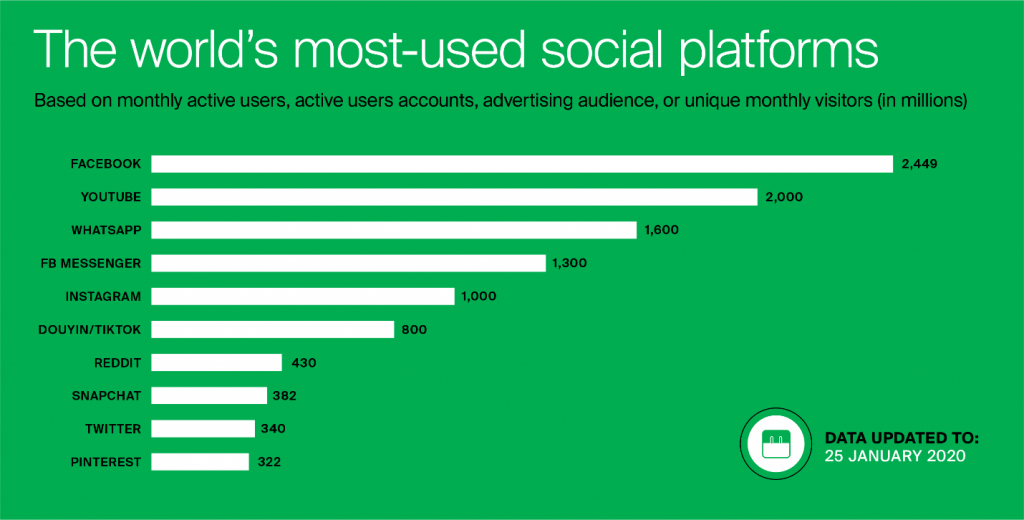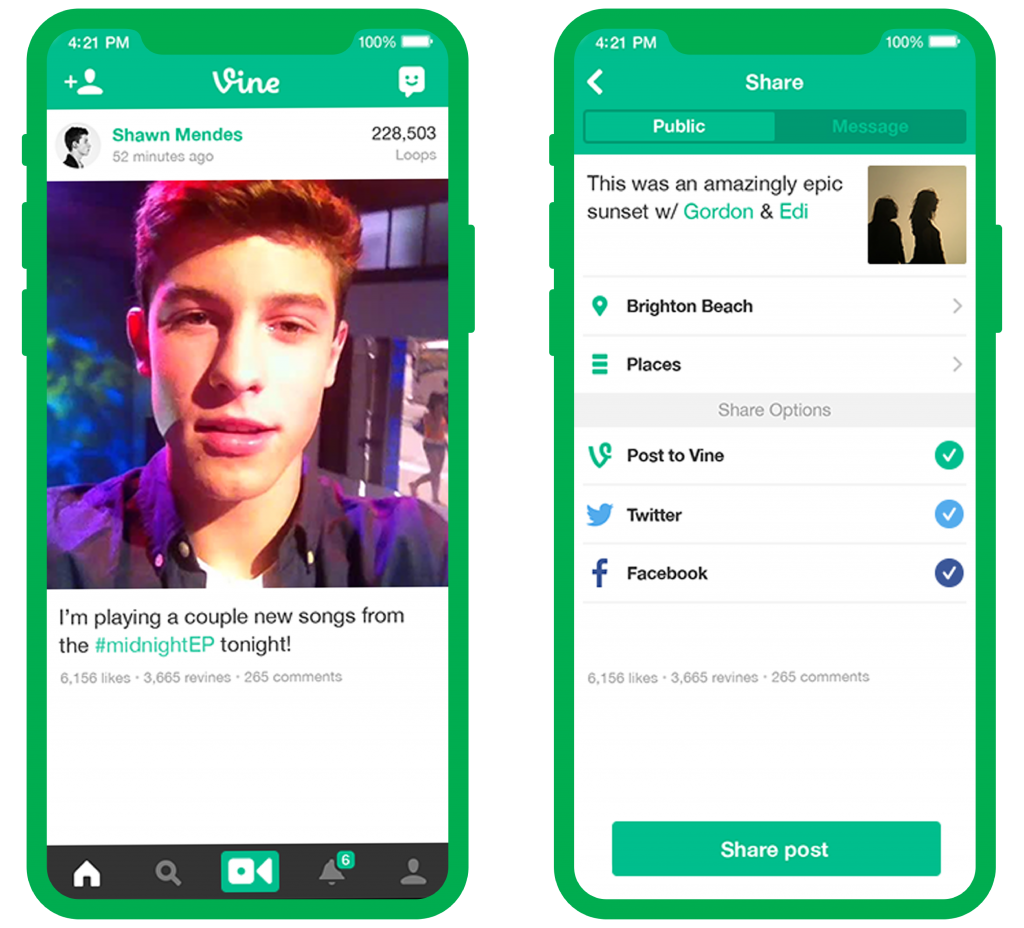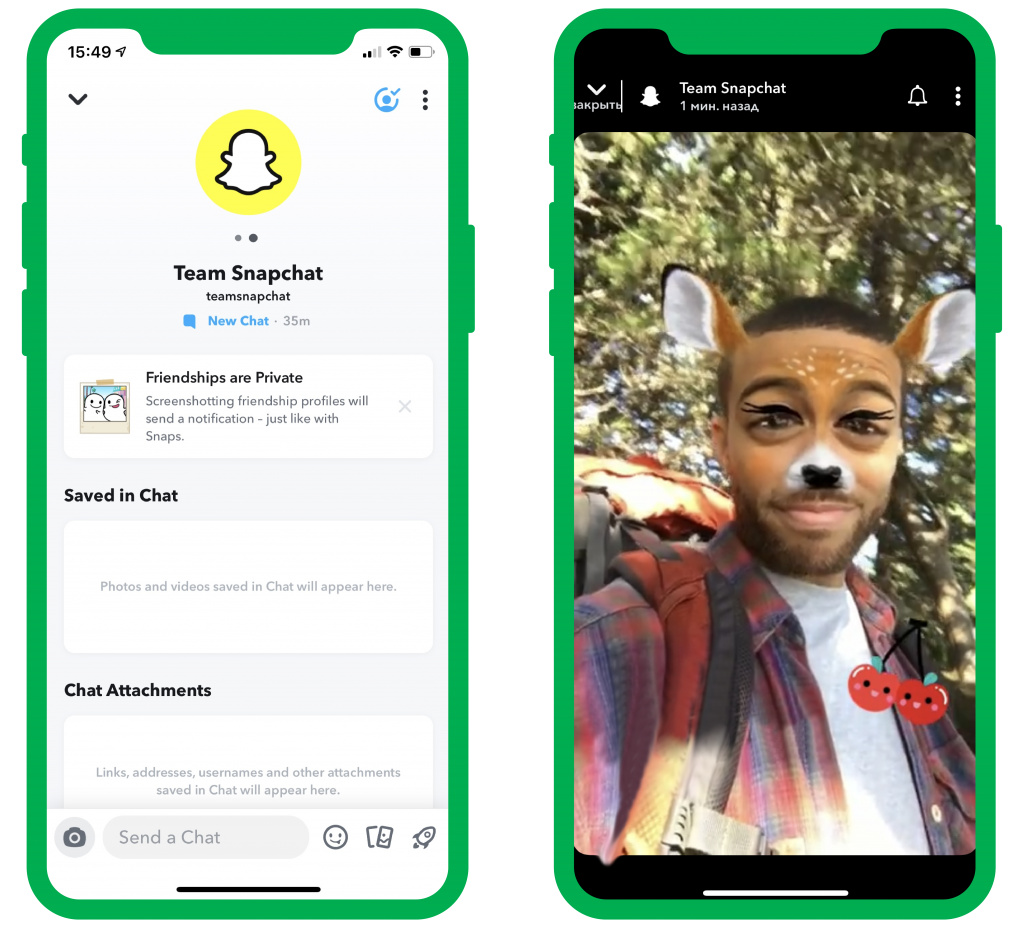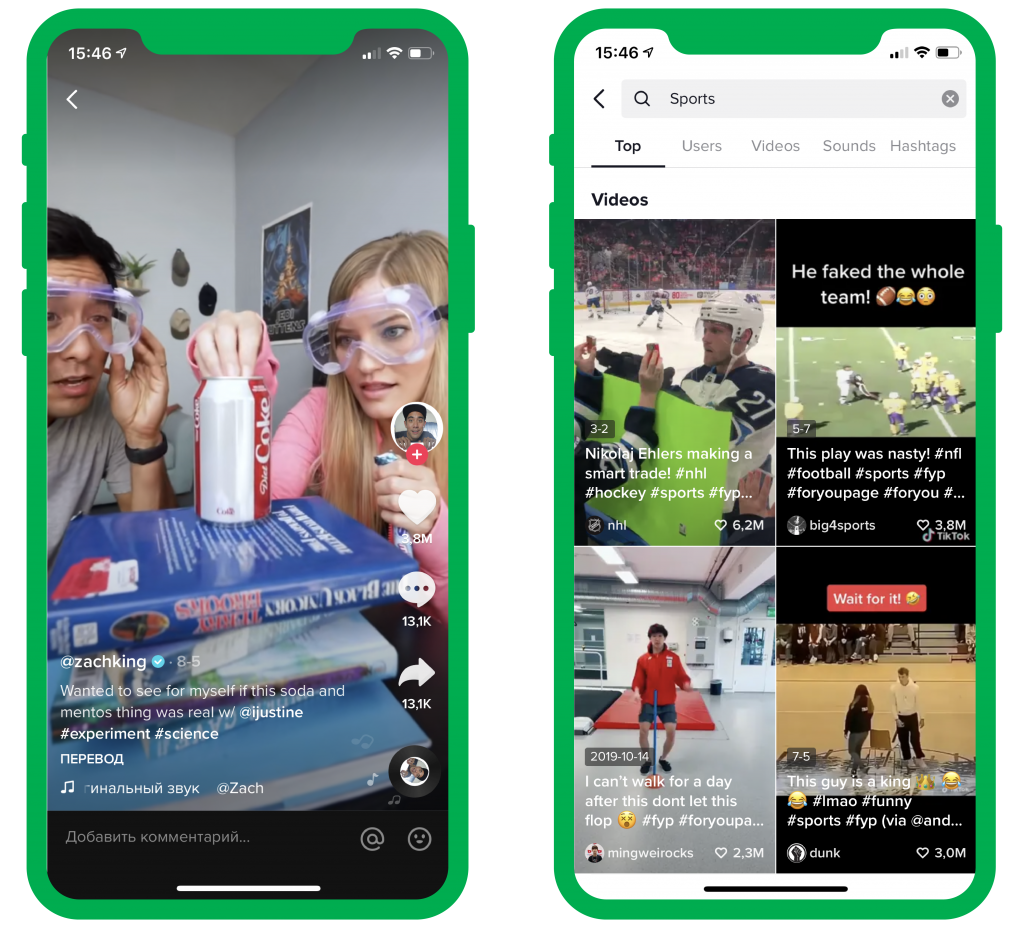When talking about the TOP 8 mobile marketing trends for 2020, we referred to video as an effective form of advertising, and to the attractiveness of short videos to an audience sinking in a sea of content in particular.
Let’s have a look at how the short videos have gone from mere entertainment to an essential element of marketing communications. We will not focus on familiar and easy-to-understand services such as Facebook and Instagram and will investigate the evolution of a more original category of apps based on the short video format instead.

Vine: a wee bit of history
It all started with Vine, a US-developed mobile app that allowed the creation of 6-second looped videos that users could share on social networks. The application development started in June 2012, and by October of the same year — long before its release on January 24, 2013 — the service was acquired by Twitter.
Vine videos (Vines) could be shared across multiple platforms such as Facebook and Twitter. ’Users’ videos were divided into different categories, which made creating and distributing thematic content for specific audience segments possible, but were not promoted by the platform otherwise.

The acquisition of Vine was quite a tangible achievement for Twitter. According to VentureBeat, the app’s total MAU reached 200 million in August 2015. The bulk of the app’s audience hailed from the United States (29.4%), Mexico (9.2%) and the UK (5.6%).
The service was not integrated directly into Twitter but operated as a standalone application instead. The video creation process was simple and did not involve any additional editing. You hold your finger on the screen — the recording is on. Release, and the recording stops; to resume — simply tap the screen again. This allowed users to record multiple short clips that were combined into a continuous video, which set Vine apart from the popular at that time Viddy and SocialCam.
After Vine allowing its users to record videos with their phone’s front camera in 2013, the app’s popularity skyrocketed: in October 2013, Statista announced Vine was the fastest growing service in the world, surpassing even giants like Facebook, Twitter and Instagram. A whole galaxy of young stars sprung up around the service, such as Logan Paul, whose videos have totalled at 4 billion views. Logan successfully monetised his channel, receiving payments of up to $200 000 to create a single Vine for the brands, as was the case with the Dunkin’ Donuts.
The first tangible challenge for Vine was Instagram introducing 15-second videos in June 2013. Due to the longer duration of recorded videos, which eventually grew to 60 seconds, Instagram was more attractive for influencers and celebrities. While creating a Vine video was akin to solving a puzzle or completing an art project, the competing format was much more flexible and user-friendly.
On top of that, Instagram began promoting celebrity accounts in the “Explore” tab, which granted them significantly more exposure compared to Vine. As a result, brands — and consequentially the influencers — began to shift their focus towards other communication channels, while Vine continued to adhere to the philosophy of “art for the art’s sake” and did not move toward monetisation.
Despite the undeniable impact on modern social media and popular culture, Vine was not able to adapt to the new realities of the market, especially with Snapchat on the horizon. While allowing its users to exchange short videos (and eventually broadcast them publicly), the latter also constantly expanded its functionality.
Snapchat — more than a short video service
Today, Snapchat is one of the most popular social networks in the world. As of January 2020, its audience has reached 360 million active users per month, generating three billion photos and videos called “snaps” every day. As with Vine, almost a third of the app’s users live in the United States.
Snapchat began in 2011 with the idea of a social network in which user photos and videos would disappear from the site shortly after being published.

Snapchat has positioned itself as an app that allows you to share information that you would not necessarily want to preserve on the web. Snapchat’s popularity among young social media users owes a lot to the ability to post whatever they please without considering whether they will be embarrassed about this content later. As one of the application creators and Snap Inc. CEO Evan Spiegel commented in a Telegraph interview:
“Snapchat changed that perception of deleting something as bad. Online typically you delete something if it’s bad or if it’s really embarrassing,” Snapchat CEO Evan Spiegel.
A year after its release, Snapchat launched a feature that rapidly expanded the app’s audience: video recording. While only 10 seconds long, it was enough to increase the number of published snaps to 50 million a day.
Later in 2013, Snapchat introduced Stories. From that moment on, Snapchat users were able to post a series of photos and videos that remained available for viewing for the next 24 hours. Additionally, Snapchat came up with “Our Story”, another feature that allows Snapchat users around the world to post photos and videos from sporting events, concerts, political rallies, and other events.
By 2020, Snapchat’s active audience reached over 380 million monthly users. The social component of the service has guaranteed its popularity and relevance, supported by constant functionality updates. At the same time, recording and sharing videos still remains one of the most popular functions among users, with Snapchat users watching 18 billion videos daily.
While allowing brands to go after user-generated content, Snapchat is ultimately better suited for more traditional brand-driven campaigns.
TikTok — a rival appears
TikTok is a synthesis of two applications created in China, that initially had utterly different audiences: the bulk of the Western audience of TikTok initially used the Musical.ly, launched in August 2014, that allowed users to record 15-to-60 second long lipsync videos. The Eastern part of the audience used Douyin — the “original” version of TikTok (in China, the application is still known as Douyin, and despite the identical interface, it differs in functionality and content available).
Launched in China in September 2016, Douyin was introduced to the overseas market under its new name — TikTok — a year later. Soon, Bytedance, the developer of TikTok, decided to strengthen its position further: Musical.ly was acquired on November 9, 2017, and both platforms were merged into a single app, available to users around the world, on August 2, 2018. As of 2020, TikTok’s MAU has reached 800 million users.
In terms of its functionality and focus on immersing its users in entertainment content, TikTok is very close to Vine: dances, lipsyncing, challenges, reaction videos and similar user-generated content helped the service to virtually occupy Vine’s niche.

However, TikTok differs from its spiritual progenitor in terms of its content promotion algorithms, which significantly increase its value in the eyes of both influencers and marketers. Today the service is an almost perfect environment for user-generated content, which the company itself explicitly emphasises. This is further reinforced by the extreme popularity of challenges, thanks to which brands can either jump on the hype train or come up with their own challenges.
The new opportunities
Despite the seeming equilibrium between TikTok and Snapchat, the balance of power may change in the near future: in recent months, TikTok has faced a ban in India, where its active audience reached 119 million active users, and president Trump issued orders banning TikTok and WeChat in US, the attention of users immediately turned to… Vine. More precisely, to its direct descendant Byte, which supposedly should address all the mistakes of its progenitor, both in terms of functionality and in terms of monetisation, offering a revenue-sharing model, according to which the content creators with the most views will receive proportionate rewards.
Despite all three platforms sharing a strong emphasis on the ability to create and share videos as a core function, the marketing application of these services differs:
- TikTok and Byte call for a more creative approach and represent a kind of “lottery” when it is difficult to predict whether a brand will succeed at following the ever-changing trends.
- Snapchat offers more advanced advertising options, including the in-app purchases, which can be especially attractive for retail brands or for those working with more “conservative” audiences.
With the versatility of short videos in mind, it’s still vital to understand your audience’s preferences and priorities. Our previous article will help you exactly with that.

